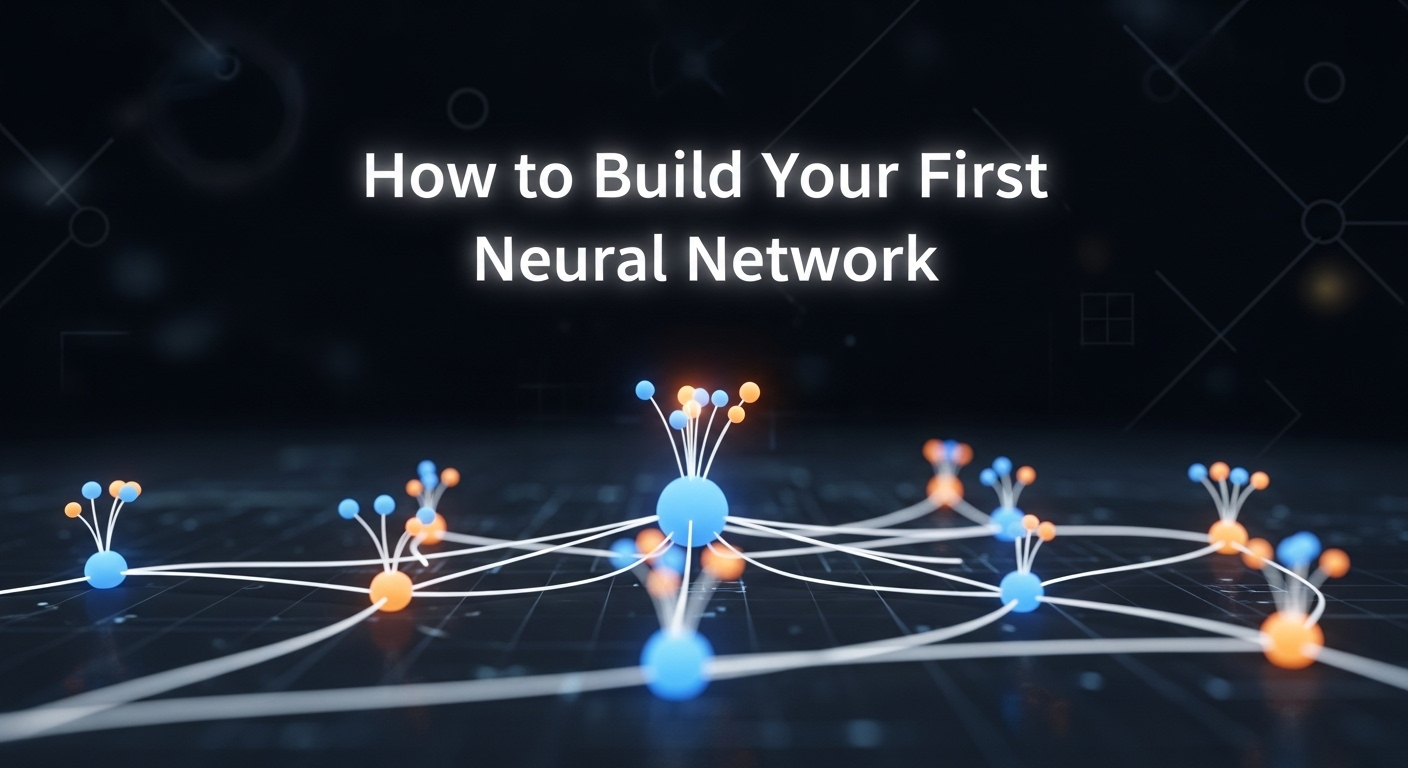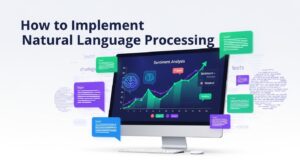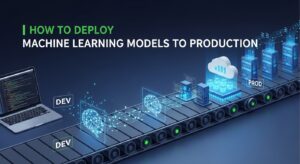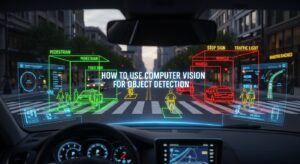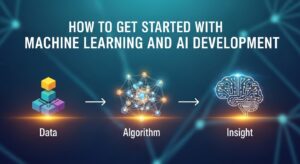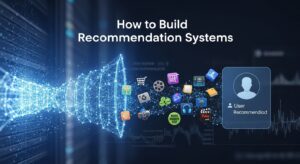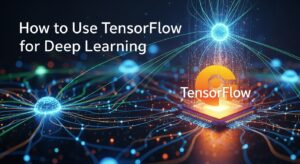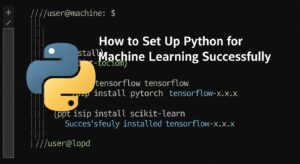Building your first neural network might seem intimidating, but with the right guidance, you’ll discover it’s an incredibly rewarding journey into artificial intelligence. Whether you’re a complete beginner or have some programming experience, this comprehensive guide will walk you through everything you need to know to build neural network models from scratch.
Neural networks are the foundation of modern AI, powering everything from image recognition to natural language processing. By the end of this article, you’ll have built your own working neural network and understand the fundamental concepts that drive this revolutionary technology.
What is a Neural Network and Why Should You Build One?
A neural network is a computational model inspired by the human brain’s structure. It consists of interconnected nodes (neurons) that process information and learn patterns from data. When you build neural network architectures, you’re essentially creating systems that can recognize patterns, make predictions, and solve complex problems.
The power of neural networks lies in their ability to learn from examples without explicit programming for every scenario. This makes them perfect for tasks like:
- Image classification and computer vision
- Natural language processing and chatbots
- Predictive analytics and forecasting
- Recommendation systems
- Medical diagnosis and drug discovery
Essential Tools and Technologies to Build Neural Network Models
Before diving into the actual construction process, you need the right toolkit. Here are the essential technologies you’ll use to build neural network solutions:
| Tool Category | Recommended Options | Purpose |
|---|---|---|
| Programming Language | Python 3.8+ | Primary development language |
| Deep Learning Framework | TensorFlow, PyTorch, Keras | Neural network construction |
| Data Processing | NumPy, Pandas | Data manipulation and analysis |
| Visualization | Matplotlib, Seaborn | Plotting and data visualization |
| Development Environment | Jupyter Notebook, Google Colab | Interactive coding platform |
Setting Up Your Development Environment
Start by installing Python and the necessary libraries. The easiest approach is using Anaconda, which comes pre-packaged with most data science tools:
# Install essential packages
pip install tensorflow numpy pandas matplotlib scikit-learn
For beginners, Google Colab provides a free, cloud-based environment where you can build neural network models without any local setup.
Step 1: Understanding Neural Network Architecture
Before you build neural network models, it’s crucial to understand their basic structure. A typical neural network consists of three main components:
- Input Layer: The input layer receives raw data and passes it to the network. Each neuron in this layer represents one feature of your dataset.
- Hidden Layers: Hidden layers perform the actual computation and feature extraction. These layers learn complex patterns and relationships in your data. The number of hidden layers determines the network’s depth.
- Output Layer: The output layer produces the final prediction or classification. For binary classification, you might have one neuron, while multi-class problems require multiple output neurons.
Step 2: Preparing Your Dataset for Neural Network Training
Data preparation is critical when you build neural network models. Poor data quality leads to poor model performance, regardless of architecture complexity.
Data Collection and Cleaning
Start with a clean, well-structured dataset. For your first project, consider using popular datasets like:
- MNIST handwritten digits for image classification
- Iris flower dataset for basic classification
- Boston housing prices for regression
Data Preprocessing Steps
- Normalization: Scale your features to prevent certain variables from dominating others
- Handling Missing Values: Remove or impute missing data points
- Feature Engineering: Create meaningful features from raw data
- Train-Test Split: Divide data into training and testing sets (typically 80-20 split)
Step 3: Designing Your First Neural Network Architecture
When you build neural network architectures, start simple and gradually increase complexity. Here’s a basic design framework:
Choosing Network Size
For beginners, start with:
- 1-2 hidden layers
- 10-100 neurons per hidden layer
- Appropriate input/output dimensions based on your data
Activation Functions
Activation functions introduce non-linearity into your network. Popular choices include:
- ReLU (Rectified Linear Unit): Most common for hidden layers
- Sigmoid: Good for binary classification outputs
- Softmax: Essential for multi-class classification
- Tanh: Alternative to sigmoid with centered output
Step 4: Implementing Your Neural Network with Code
Now comes the exciting part – writing code to build neural network models. We’ll use TensorFlow/Keras for this implementation:
import tensorflow as tf
from tensorflow import keras
import numpy as np
import matplotlib.pyplot as plt
# Load and prepare data
(x_train, y_train), (x_test, y_test) = keras.datasets.mnist.load_data()
# Normalize pixel values
x_train = x_train.astype('float32') / 255.0
x_test = x_test.astype('float32') / 255.0
# Reshape data for neural network
x_train = x_train.reshape(60000, 784)
x_test = x_test.reshape(10000, 784)
# Build neural network model
model = keras.Sequential([
keras.layers.Dense(128, activation='relu', input_shape=(784,)),
keras.layers.Dropout(0.2),
keras.layers.Dense(10, activation='softmax')
])
# Compile the model
model.compile(optimizer='adam',
loss='sparse_categorical_crossentropy',
metrics=['accuracy'])
This code creates a simple neural network with one hidden layer containing 128 neurons.
Step 5: Training Your Neural Network Model
Training is where your network learns to recognize patterns. When you build neural network models, proper training configuration is essential for success.
Key Training Parameters
| Parameter | Description | Typical Values |
|---|---|---|
| Epochs | Number of complete passes through training data | 10-100 |
| Batch Size | Number of samples processed before updating weights | 32-256 |
| Learning Rate | How quickly the model adapts to errors | 0.001-0.01 |
| Validation Split | Portion of data reserved for validation | 0.1-0.3 |
Training Process
# Train the model
history = model.fit(x_train, y_train,
epochs=10,
batch_size=32,
validation_split=0.2,
verbose=1)
# Evaluate model performance
test_loss, test_accuracy = model.evaluate(x_test, y_test, verbose=0)
print(f'Test accuracy: {test_accuracy:.4f}')
Step 6: Evaluating and Optimizing Neural Network Performance
After training, you must evaluate how well your network performs. This step is crucial when you build neural network solutions for real-world applications.
Performance Metrics
Different problems require different evaluation metrics:
- Classification: Accuracy, Precision, Recall, F1-Score
- Regression: Mean Absolute Error (MAE), Root Mean Square Error (RMSE)
- Binary Classification: ROC-AUC, Confusion Matrix
Visualization and Analysis
# Plot training history
plt.figure(figsize=(12, 4))
plt.subplot(1, 2, 1)
plt.plot(history.history['accuracy'], label='Training Accuracy')
plt.plot(history.history['val_accuracy'], label='Validation Accuracy')
plt.title('Model Accuracy')
plt.xlabel('Epoch')
plt.ylabel('Accuracy')
plt.legend()
plt.subplot(1, 2, 2)
plt.plot(history.history['loss'], label='Training Loss')
plt.plot(history.history['val_loss'], label='Validation Loss')
plt.title('Model Loss')
plt.xlabel('Epoch')
plt.ylabel('Loss')
plt.legend()
plt.show()
Common Challenges When You Build Neural Network Models
Overfitting Prevention
Overfitting occurs when your model memorizes training data instead of learning generalizable patterns. Combat this with:
- Dropout layers: Randomly deactivate neurons during training
- Early stopping: Stop training when validation performance plateaus
- Regularization: Add penalty terms to prevent complex models
- Data augmentation: Increase dataset diversity artificially
Gradient Problems
Two common issues can derail your training:
- Vanishing Gradients: Gradients become too small to update weights effectively
- Exploding Gradients: Gradients become too large, causing unstable training
Solutions include proper weight initialization, gradient clipping, and using appropriate activation functions.
Step 7: Advanced Techniques to Build Neural Network Solutions
Once comfortable with basics, explore these advanced concepts to build neural network architectures for complex problems:
Convolutional Neural Networks (CNNs)
Perfect for image-related tasks, CNNs use specialized layers that detect local features:
cnn_model = keras.Sequential([
keras.layers.Conv2D(32, (3, 3), activation='relu', input_shape=(28, 28, 1)),
keras.layers.MaxPooling2D((2, 2)),
keras.layers.Conv2D(64, (3, 3), activation='relu'),
keras.layers.MaxPooling2D((2, 2)),
keras.layers.Flatten(),
keras.layers.Dense(64, activation='relu'),
keras.layers.Dense(10, activation='softmax')
])
Recurrent Neural Networks (RNNs)
Ideal for sequential data like time series or natural language:
- LSTM (Long Short-Term Memory): Handles long-term dependencies
- GRU (Gated Recurrent Unit): Simpler alternative to LSTM
- Bidirectional RNNs: Process sequences in both directions
Best Practices and Professional Tips
Model Development Workflow
- Start Simple: Begin with basic architectures before adding complexity
- Iterative Improvement: Gradually enhance your model based on performance
- Cross-Validation: Use multiple train-validation splits for robust evaluation
- Documentation: Keep detailed records of experiments and results
Performance Optimization
To efficiently build neural network models that scale:
- Batch Processing: Process multiple samples simultaneously
- GPU Acceleration: Leverage CUDA for faster training
- Model Checkpointing: Save progress during long training sessions
- Hyperparameter Tuning: Systematically optimize network parameters
Real-World Applications and Next Steps
Now that you understand how to build neural network foundations, explore these exciting applications:
Computer Vision Projects
- Facial recognition systems
- Medical image analysis
- Autonomous vehicle perception
- Quality control in manufacturing
Natural Language Processing
- Sentiment analysis for social media
- Chatbot development
- Language translation services
- Content generation and summarization
Predictive Analytics
- Stock market forecasting
- Customer behavior prediction
- Weather modeling
- Supply chain optimization
Learning Resources and Community Support
Continue your journey to build neural network expertise with these valuable resources:
Online Courses and Tutorials
- Deep Learning Specialization on Coursera
- Fast.ai Practical Deep Learning Course
- MIT OpenCourseWare Machine Learning
Books and Documentation
- “Deep Learning” by Ian Goodfellow, Yoshua Bengio, and Aaron Courville
- TensorFlow Official Documentation
- PyTorch Tutorials and Examples
Community and Forums
Troubleshooting Common Issues
Model Won’t Train
If your network isn’t learning:
- Check data preprocessing and normalization
- Verify loss function matches your problem type
- Adjust learning rate (try values between 0.001 and 0.1)
- Ensure sufficient training data
Poor Performance
When accuracy is disappointing:
- Increase model complexity gradually
- Improve data quality and quantity
- Experiment with different architectures
- Apply data augmentation techniques
Training Takes Too Long
Speed up training by:
- Reducing batch size or model size
- Using GPU acceleration
- Implementing early stopping
- Optimizing data loading pipelines
Conclusion: Your Neural Network Journey Begins
Learning to build neural network models opens doors to countless AI applications and career opportunities. Start with simple projects, practice regularly, and gradually tackle more complex challenges.
Remember that every expert was once a beginner. The key to success is consistent practice, continuous learning, and patience with the iterative process of model development.
Your first neural network might be simple, but it represents the beginning of an exciting journey into artificial intelligence. As you continue to build neural network solutions, you’ll develop the skills needed for advanced AI applications and potentially contribute to the next breakthrough in machine learning.
The field of neural networks evolves rapidly, with new architectures and techniques emerging regularly. Stay curious, keep experimenting, and don’t hesitate to engage with the vibrant AI community for support and inspiration.

